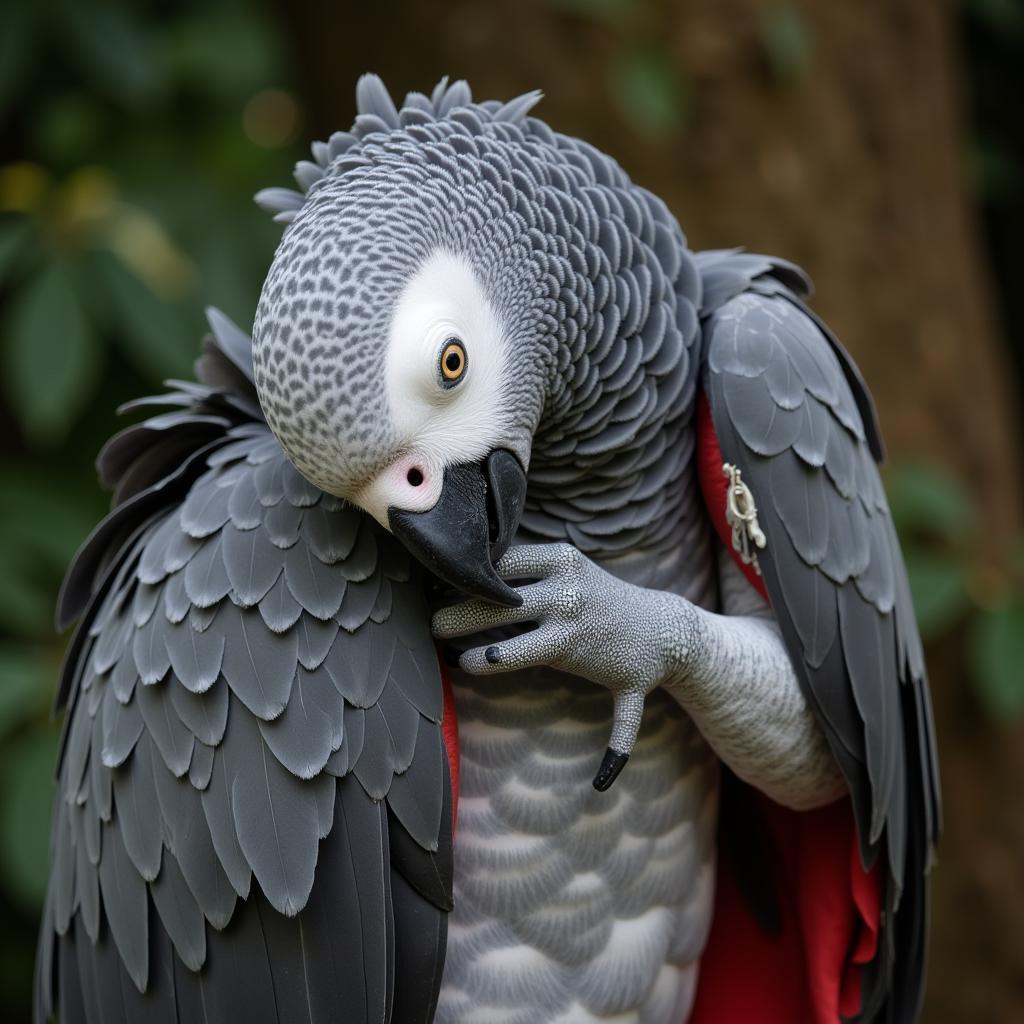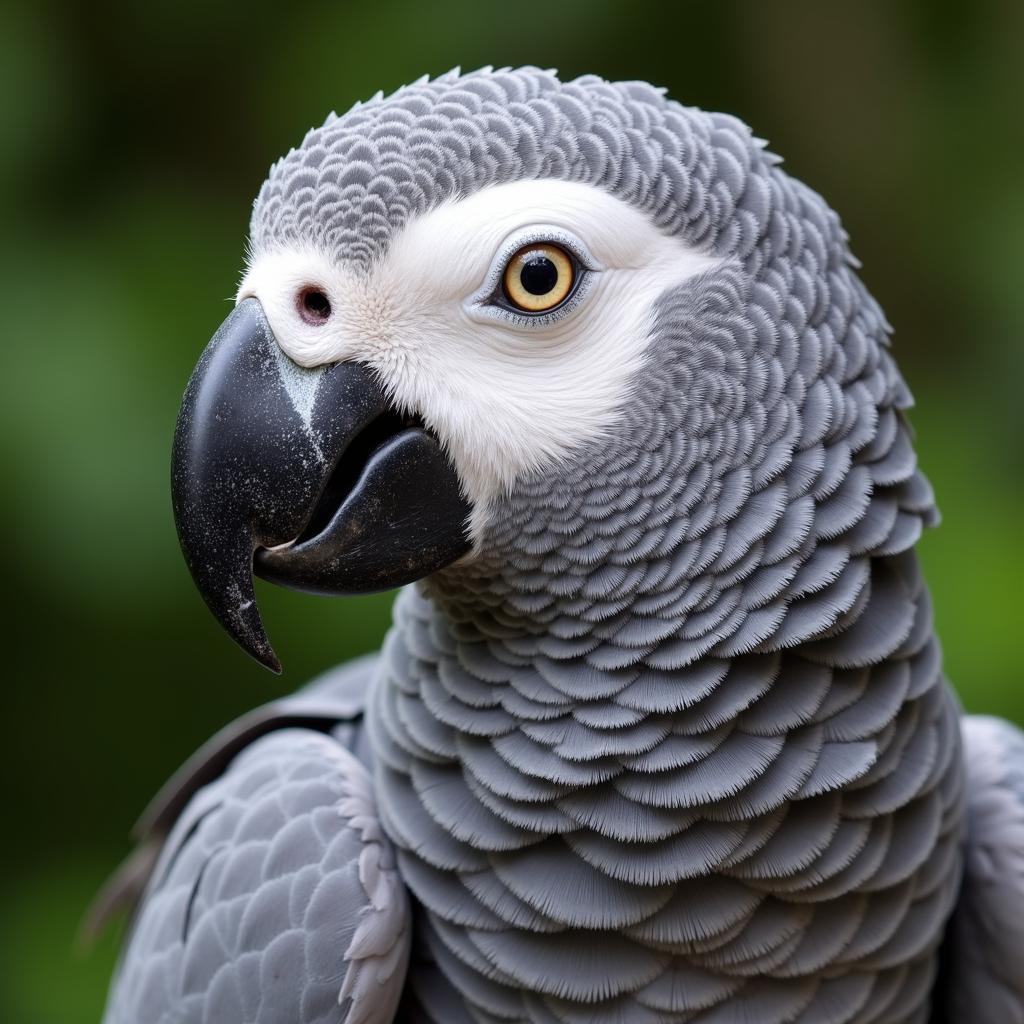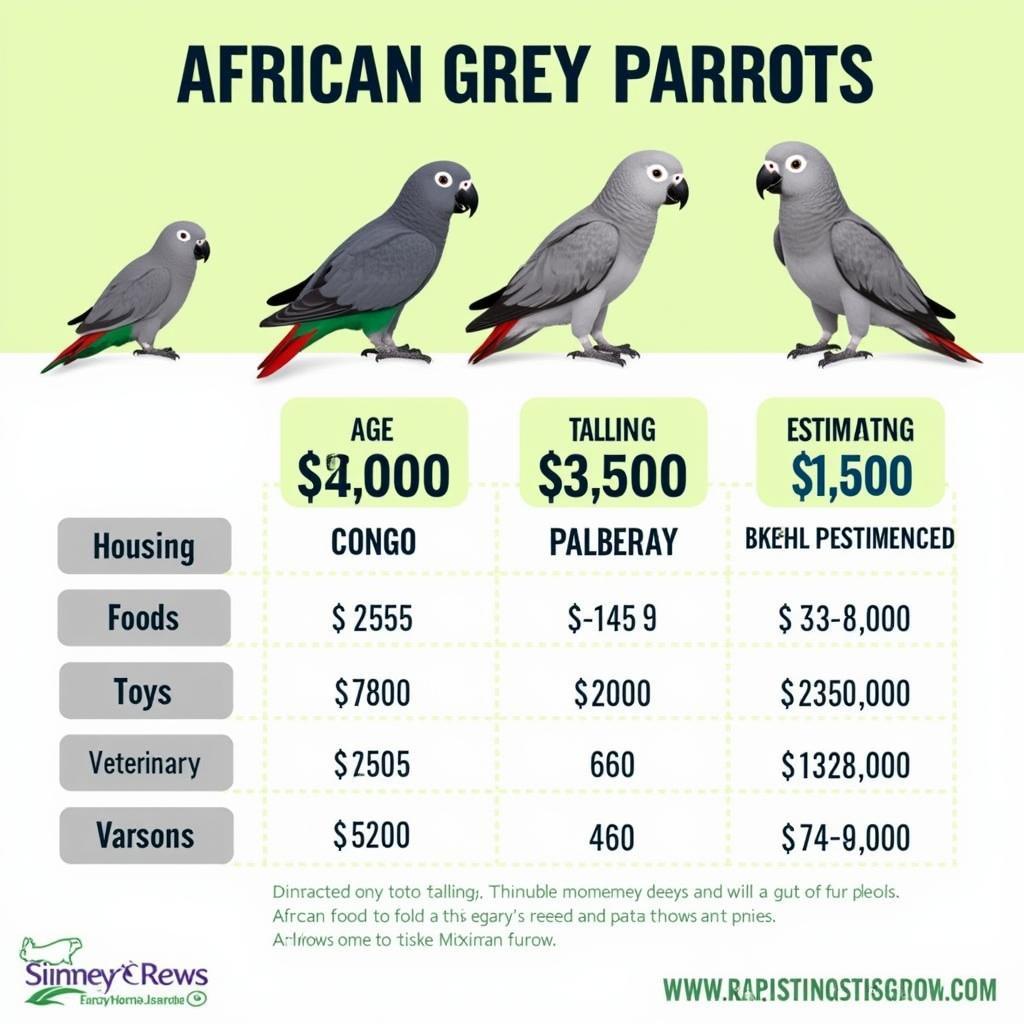African Grey Parrot Feather Care: A Comprehensive Guide
African Grey Parrot Feather Care is essential for their overall health and well-being. Just like humans, healthy feathers reflect a healthy bird. This guide delves into the intricacies of maintaining your African grey’s vibrant plumage, covering everything from diet and bathing to identifying potential problems and solutions.
Maintaining healthy feathers isn’t just about aesthetics. It directly impacts an African grey’s ability to regulate body temperature, fly, and protect itself from the elements. A dull, damaged plumage can be an indicator of underlying health issues, stress, or nutritional deficiencies. Understanding the nuances of african grey parrot feather care is key to responsible parrot ownership. You might even find helpful videos on African grey parrots talking YouTube.
The Importance of Proper African Grey Parrot Feather Care
Feathers are more than just beautiful adornments; they are crucial for an African grey’s survival and quality of life. They provide insulation, waterproofing, and camouflage, allowing these intelligent birds to thrive in their natural environment. In captivity, maintaining healthy plumage becomes even more critical, as their environment is controlled by us.
Diet and Nutrition for Vibrant Feathers
A balanced and nutritious diet is the cornerstone of african grey parrot feather care. A deficiency in essential vitamins, minerals, and amino acids can lead to brittle feathers, feather plucking, and discoloration. Ensure your parrot’s diet consists of high-quality parrot pellets supplemented with fresh fruits, vegetables, and healthy fats.
- Essential Vitamins: Vitamins A, D3, and E are particularly important for feather health.
- Minerals: Calcium, zinc, and selenium contribute to strong feather growth.
- Amino Acids: Methionine and lysine are crucial building blocks for keratin, the primary protein in feathers.
Bathing and Hygiene for Healthy Feathers
Regular bathing is essential for maintaining clean and healthy feathers. Bathing helps remove dust, dirt, and excess dander, preventing feather damage and promoting preening behavior. Provide your African grey with a shallow dish of lukewarm water or mist them gently with a spray bottle.
- Frequency: Aim for bathing 2-3 times a week, or more frequently during molting season.
- Water Temperature: Lukewarm water is ideal, avoiding extremes of hot or cold.
- Drying: Allow your parrot to air dry naturally or provide a warm, draft-free area.
Recognizing Feather Problems in African Greys
Being able to identify potential feather problems early on is crucial for effective african grey parrot feather care. Common issues include feather plucking, stress bars (horizontal lines on the feathers), and frayed feathers. These can indicate stress, boredom, nutritional deficiencies, or underlying medical conditions. If you are on a budget, you can look for African grey for sale 500.
 African Grey Parrot Preening its Feathers for Optimal Health
African Grey Parrot Preening its Feathers for Optimal Health
“Regular vet checkups are essential for preventative care and addressing any potential feather issues before they escalate,” advises Dr. Avian Care, a renowned avian veterinarian.
Addressing Feather Issues and Seeking Veterinary Care
If you notice any abnormalities in your African grey’s feathers, consult an avian veterinarian immediately. They can diagnose the underlying cause and recommend appropriate treatment.
Environmental Enrichment for Feather Health
Providing a stimulating environment is crucial for your African grey’s mental and physical well-being, which directly impacts feather health. Offer a variety of toys, perches, and opportunities for social interaction to prevent boredom and stress-related feather plucking. Find an African grey bird store for all your needs.
“Mental stimulation is just as important as physical health for maintaining vibrant plumage,” adds Dr. Avian Care. “A bored parrot is more likely to engage in destructive behaviors like feather plucking.”
 Healthy African Grey Parrot Feathers: A Sign of Well-being
Healthy African Grey Parrot Feathers: A Sign of Well-being
Molting: A Natural Process
Molting is a natural process where old feathers are replaced with new ones. During this period, your African grey might appear slightly dishevelled and require extra attention to their nutritional needs. You can learn more about this by looking up information on African grey parrot shedding feathers. The price of these parrots can vary depending on location. For example, you can research African grey parrots price in Pakistan.
Conclusion
African grey parrot feather care is an ongoing commitment that requires attention to detail and a proactive approach. By providing a balanced diet, regular bathing opportunities, a stimulating environment, and prompt veterinary care when needed, you can ensure your feathered companion enjoys a long, healthy life with a vibrant and beautiful plumage. Remember, healthy feathers are a reflection of a healthy bird.
FAQs
- How often should I bathe my African grey? 2-3 times a week, or more during molting.
- What are signs of unhealthy feathers? Feather plucking, stress bars, frayed or dull feathers.
- What vitamins are important for feather health? Vitamins A, D3, and E.
- Why is my African grey plucking its feathers? Possible causes include stress, boredom, nutritional deficiencies, or medical conditions. Consult a vet.
- What should I feed my African grey for healthy feathers? High-quality parrot pellets, fresh fruits, vegetables, and healthy fats.
- How can I prevent feather plucking? Provide a stimulating environment with toys, perches, and social interaction.
- What is molting? A natural process where old feathers are replaced with new ones.
Need assistance? Contact us 24/7. Phone: +255768904061, Email: [email protected], Address: Mbarali DC Mawindi, Kangaga, Tanzania.

